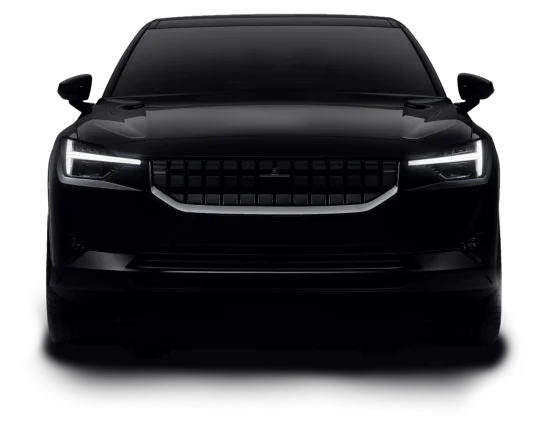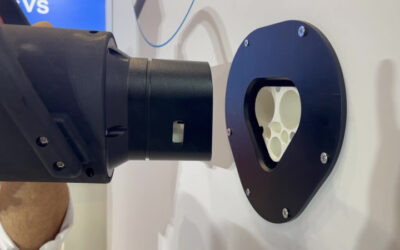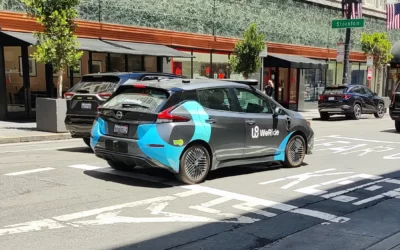Future-Proof Electric Fleets
The electrification of commercial fleets is inevitable
Whilst Electric Vehicles (EVs) made up only 10% of global new car sales in 2021, by 2050 they’re predicted to reach a staggering 80%. As technology progresses (and gets cheaper) and EV infrastructure grows, future-focused fleets have their eyes on the prize; electrification.
Planning for a smooth electrification transition is vital, and it needs to happen quickly. Building relationships within the EV ecosystem and trialing scalable operational processes that suit fleet use-cases takes time. And time to transition is one luxury fleets have less of everyday.
Electrification has huge cost-saving potential.
Electrification represents an immense cost-saving opportunity. Through maintenance and fuel costs alone, current electric fleets have saved hundreds of thousands of dollars. Though the higher initial purchase price of an EV may dissuade some less discerning fleet operators, EVs have a significantly lower total cost of ownership (TCO) over their lifetime. By 2030, the total cost of ownership (TCO) of EVs in a commercial fleet will be 15 to 25 percent less than their traditional internal combustion engine (ICE) counterparts, without taking advantage of other cost saving strategies which electric fleets provide. And an EVs initial purchase price won’t be a deterrent for long; all EV types are expected to reach parity with ICE vehicles sometime between 2025 and 2027, some types much sooner. They’ll be cheaper very soon after that.


An EV has around 20 moving components, whilst a combustion engine has thousands. The relative simplicity of an EV engine has a direct impact on maintenance costs. Service and maintenance of an EV costs about a third of what you’d expect to pay to maintain an ICE vehicle. Tesloop, a car-share company based in the US, found that maintenance of an EV is four to five times cheaper than their ICE equivalent. In a little over three years, Tesloop saved hundreds of thousands of dollars. Research has unequivocally shown that use-cases outside of taxi or car-sharing and across many vehicle types are showing similar savings potential.
The price of electricity is highly volatile, with possible fluctuations of plus and minus 1000% throughout a day, an enormous challenge when operating even a small fleet, let alone managing hundreds of EVs of various makes and models. However, this same volatility presents an opportunity. By orchestrating charging and driving for an entire electrified fleet, charging outside of peak hours, analysing driver habits and schedules, and taking advantage of both public and private charge infrastructure, you can massively reduce fuel costs. In fact, you could unlock 30% to 40% TCO in fuel savings alone.
These savings can only be realized with fleet-wide charging orchestration. Additional opportunities to reduce the operational cost of an electric fleet, outside of lower maintenance and fuel costs, could include; establishing strategic partnerships with charge point operators to secure fleet-wide discounts, using commercial-scale batteries charged with off-peak power to ensure fleet vehicles can take advantage of low-cost electricity at any time of day, selling overflow power back to the grid, utilizing government incentives to lower initial EV purchase prices, and taking advantage of alternative routes accessible to low-emission vehicles through traffic zoning regulations.






When to switch? Yesterday.
Electrification has massive benefits. Electric fleets are overwhelmingly cheaper long term, especially for high-use cases in which fuel savings multiplies exponentially. They’re also future-proof. As low-emission legislation around the world continues to expand, electric fleets are inevitable. Oslo and Bergen plan to ban ICE vehicles within their city limits by 2030. By 2035, the EU, US and China are expected to sell only EVs. As the landscape continues to shift and evolve, the repercussions for waiting to put plans in place grow. In order to carry out a smooth transition that takes advantage of electrification’s vast opportunities, and allocates time to pilot processes and technology for their specific use-case, fleets need to start planning now.
However, without customized solutions, an energy transition is impossible. The EV ecosystem is fragmented and charging infrastructure is often unpredictable. The operational complexity of electric fleets is immense, due to the sheer number of variables and data necessary to smoothly operate a fleet. Fleet operators need to know where and when drivers should charge, if there is a charge point available, what plug type they use, how long it will take to charge, how much charge is required to complete their trip, how they can pay, and what it will cost, all ahead of time. This is further complicated by the high number of variables that impact the range of a battery, including vehicle make and model, as well as outside variables like temperature, weather and topography.
Organizations like Chargetrip, the world’s leading EV specific routing platform, simplifies EV adoption for fleets. By utilizing EV specific routing to navigate the immense number of variables that impact an EV battery, fleet operators can take advantage of the massive cost-saving opportunities EVs provide and future-proof their operations for the years ahead.
Solving barriers with better orchestration.
Predicting the amount of energy needed for a seamless, efficient, and cost-effective fleet operation is one of the biggest hurdles in fleet electrification. Range anxiety, the fear of being left stranded without charge, also remains a huge deterrent to EV adoption. Ensuring that every driver in a fleet, regardless of its size, is confident that they will have enough charge is vital in ensuring a smooth transition.
By utilizing smart EV routing and real-time telemetry data, the switch to electric fleets is not only possible, but inevitable. Chargetrip’s Smart EV routing engine provides predictive navigation that can account for and perform seamlessly with any EV make and model mix. This allows fleet operators to predict, and plan for, the energy usage of any vehicle, on any trip. When tailored to EVs needs, this technology allows fleet operators to track; the state of charge of hundreds of fleet vehicles in real-time, plan routes in high intensity use or over long distances, take advantage of dynamic energy prices, see costs and operational efficiencies in real time (including the impact on TCO). This allows fleets to;
- Fully optimize depot charging; by knowing upfront to exactly what SOC level each individual vehicle needs to be charged for their respective routes. This frees up depot charge capacity and allows for more room to profit from variable energy costs.
- Align charging with required resting stops for longer logistical routes, city access windows, or fleet specific charge options.
- Minimize total travel time and charging when using public charging, allowing an EV fleet to easily grow to multiple shifts per day and beyond overnight charging alone, on all routes.
- Give drivers and fleet managers the confidence that they can always find a place to charge, optimized for their specific vehicle, by having dynamic EV Routing integrated. Even if the predicted route needs to change, their software can easily calculate the optimal route and charging points.
These are the missing pieces of the puzzle. The future of fleet electrification depends on rigorous planning, and building an EV ecosystem that continues to resolve the barriers and problems specific to EVs. The future is electric, and for fleets in the know, the future is now.
Rosalind Anketell Communications Manager Chargetrip

















